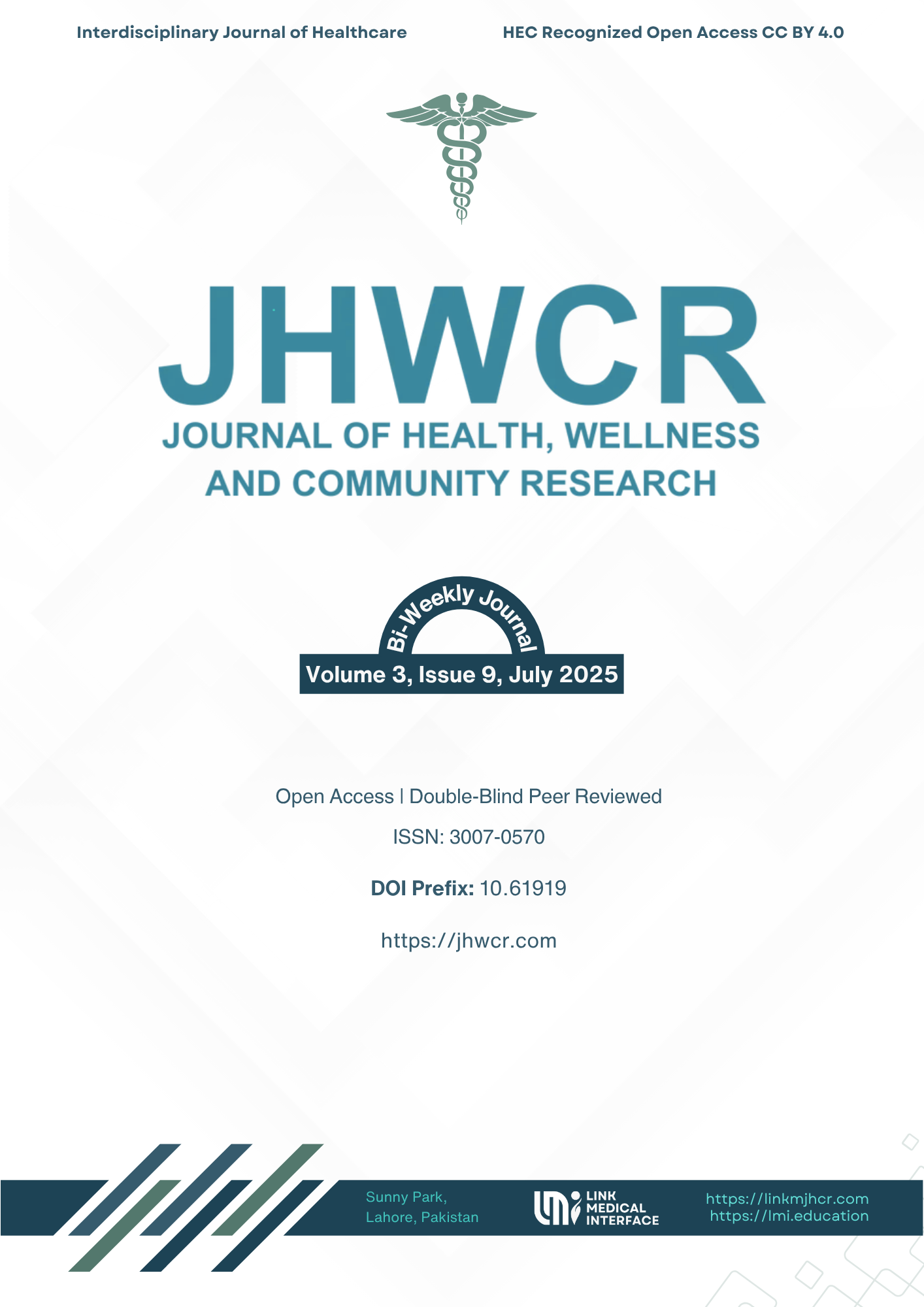Clinical Profile, Risk Factors and Outcomes of Neonatal Pneumothorax at a Tertiary Care Hospital of Bahawalpur
DOI:
https://doi.org/10.61919/9rj74k87Keywords:
Neonatal pneumothorax, respiratory distress syndrome, gestational age, birth weight, mechanical ventilation, NICU outcomesAbstract
Background: Neonatal pneumothorax is a potentially life-threatening condition characterized by air leakage into the pleural space, leading to lung collapse and impaired gas exchange. It is more prevalent among preterm, low birth weight neonates, often in association with respiratory distress syndrome (RDS), and contributes substantially to morbidity and mortality in NICUs, particularly in resource-limited settings. Despite extensive international literature, there is a paucity of data from the Bahawalpur region of Pakistan, where healthcare resources and neonatal care infrastructure differ from higher-income settings. Objective: To determine the clinical profile, risk factors, and short-term outcomes of neonatal pneumothorax in a tertiary care hospital in Bahawalpur, Pakistan. Methods: This prospective cohort study enrolled 38 neonates with radiologically confirmed pneumothorax admitted to the NICU of Combined Military Hospital Bahawalpur from August 2023 to February 2025. Data on demographics, perinatal factors, comorbidities, ventilator requirement, and outcomes were collected using standardized definitions and analyzed using descriptive statistics, t-tests, chi-square tests, odds ratios, and Pearson correlations. Results: Most cases occurred in preterm neonates (68.5% at 28–32 weeks) and those with birth weights 1,500–2,500 g (64%). RDS was the leading risk factor (47.3%). Ventilator requirement was high (84.2%) and associated with lower survival (OR 0.22, p=0.041). Lower gestational age, lower birth weight, and RDS correlated with poorer outcomes. Conclusion: Neonatal pneumothorax in Bahawalpur predominantly affects preterm, low birth weight infants with RDS, with ventilator dependence linked to higher mortality. Early recognition, lung-protective ventilation, and rapid diagnosis may improve outcomes.
Downloads
Published
Issue
Section
License
Copyright (c) 2025 Kaynat Ali, Sohail Shahzad, Amjad Iqbal, Naila Hamid, Farooq Ahmad, Salman Javed, Safia Naz (Author)

This work is licensed under a Creative Commons Attribution 4.0 International License.


